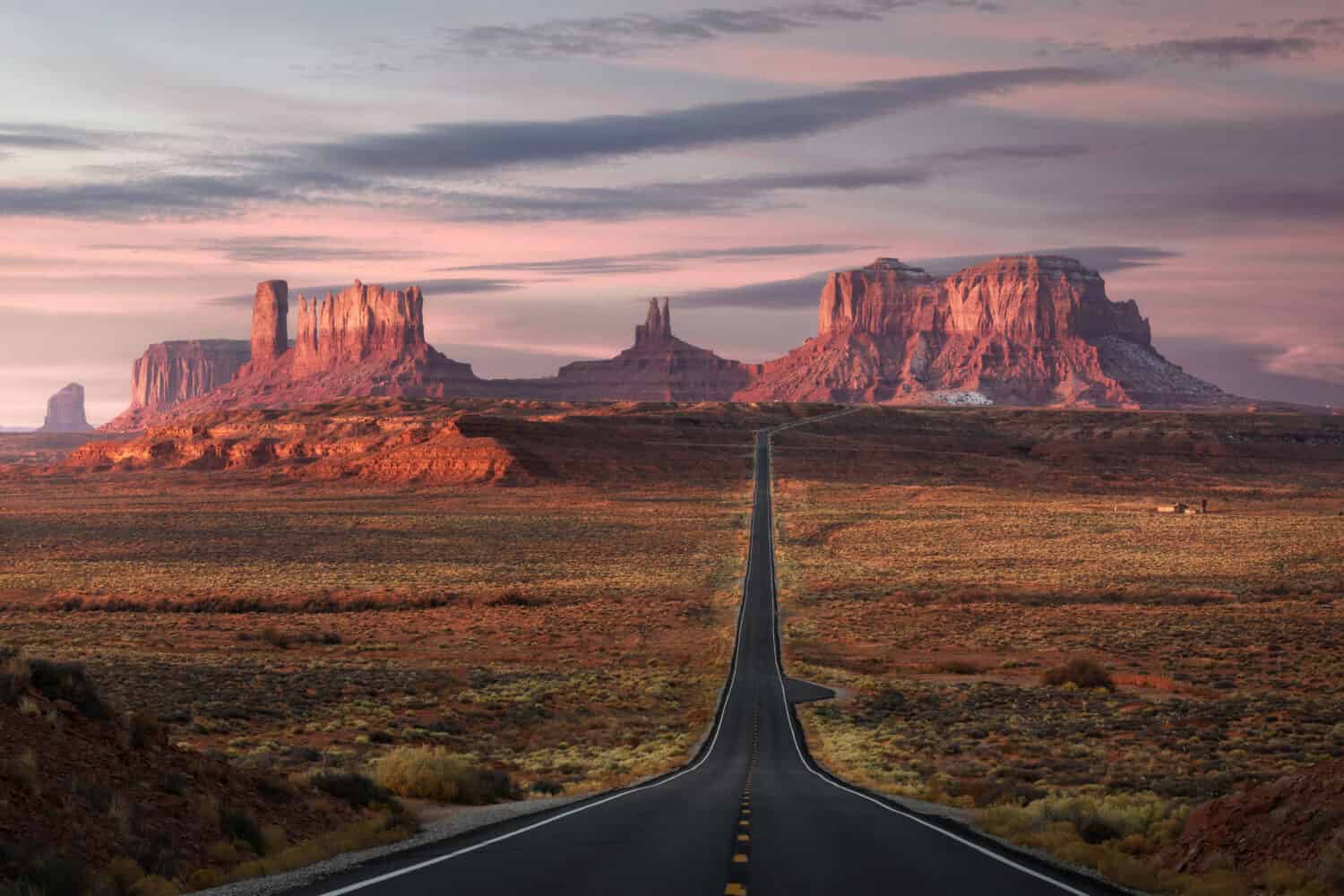Native American reservations in the United States serve as important cultural and historical landmarks. They represent diverse indigenous communities and offer a chance for them to continue celebrating their heritage.
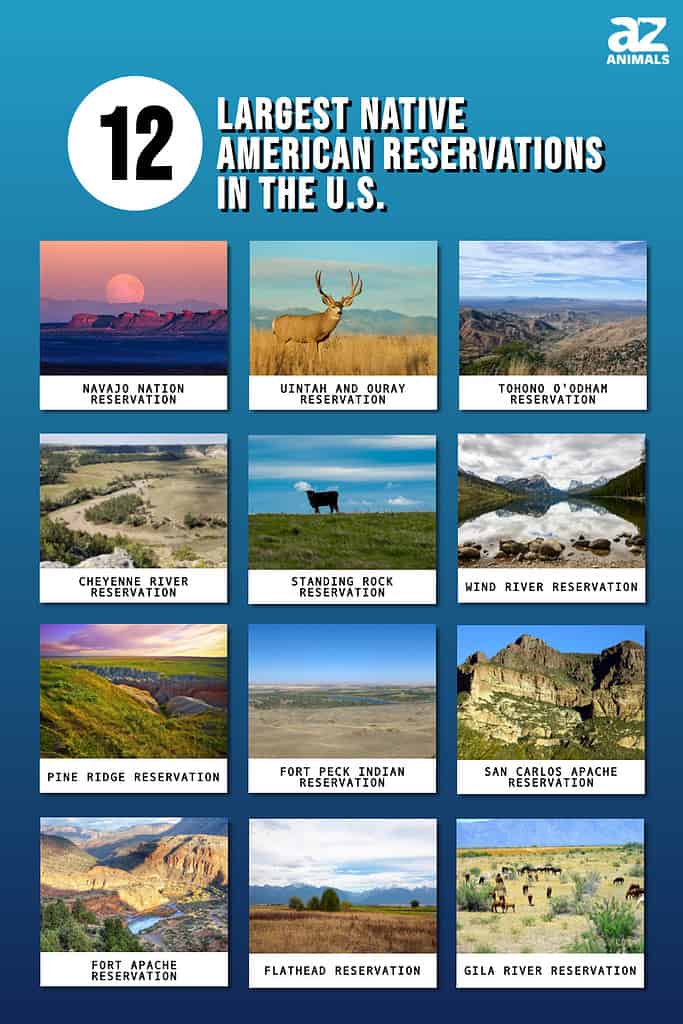
Below, we’ll discuss in more detail the top 11 largest Native American reservations in the country.
1. Navajo Nation Reservation
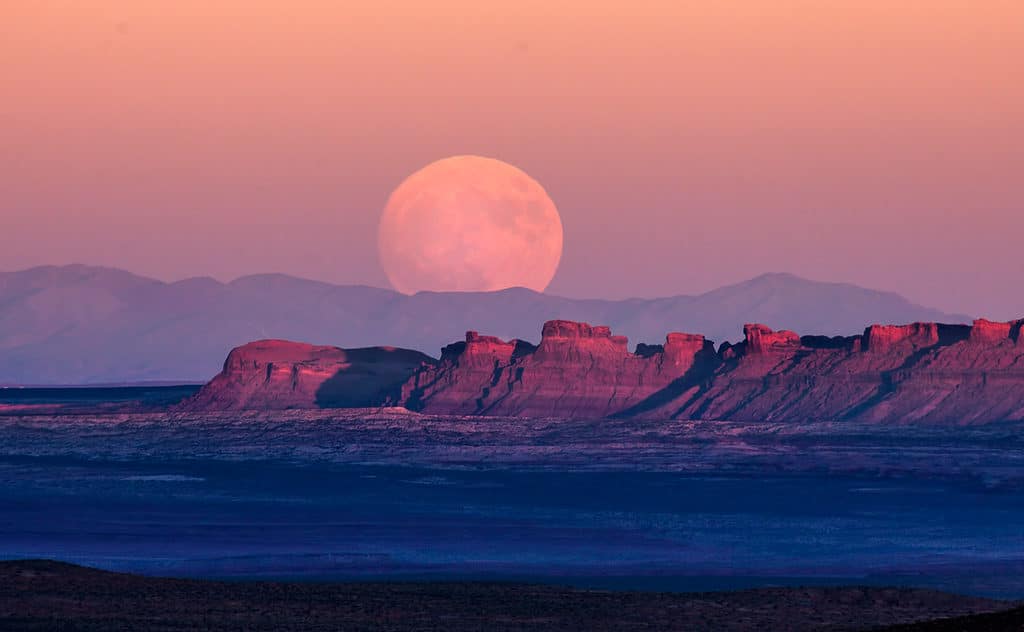
The sky feels enormous when you walk on Navajo Tribal Land.
©Michael Andrew Just/Shutterstock.com
The Navajo Nation Reservation is approximately 27,000 square miles or 16 million acres. It is primarily located in Arizona but reaches into New Mexico and Utah. Navajo Nation has a population of about 173,000 residents, making it the largest Native American reservation in the United States.
The reservation boasts diverse ecosystems, including deserts, mountains, and canyons. That means it provides ample habitats for a variety of wildlife species. Some of the species living in the region include the coyote (Canis latrans), bobcat (Lynx rufus), pronghorn antelope (Antilocapra americana), and golden eagle (Aquila chrysaetos).
The Navajo Nation’s history dates back centuries. The Navajo people, also known as Diné, have endured hardships, including the Long Walk forced relocation by the U.S. government in the 1860s. They returned to their homeland after a treaty signing in 1868.
2. Uintah and Ouray Reservation
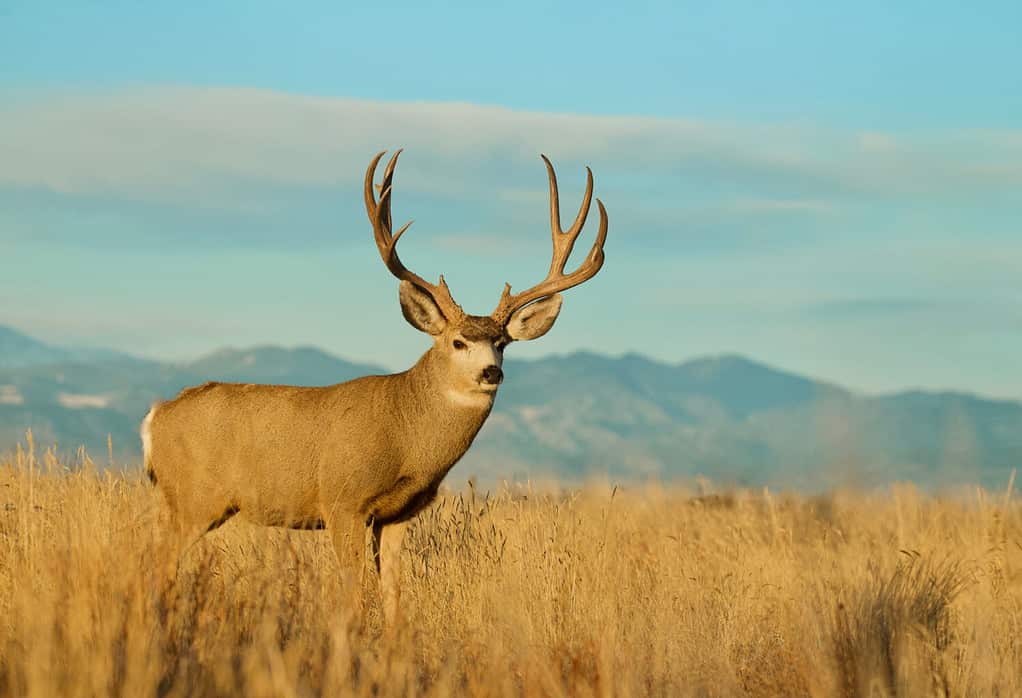
The Uintah and Ouray Indian Reservation is home to many animals, including majestic elk.
©Tom Reichner/Shutterstock.com
One of the largest Native American reservations is the Uintah and Ouray Indian Reservation, which covers approximately 6,769 square miles in northeastern Utah and has about 1,500 residents. Its diverse landscapes include mountains, forests, and high desert plateaus. These spectacular areas are home to elk (Cervus canadensis), mule deer (Odocoileus hemionus), Rocky Mountain bighorn sheep (Ovis canadensis), and golden eagles (Aquila chrysaetos).
The Ute Tribe lives on the Uintah and Ouray Reservation. They have inhabited the region for centuries. An 1861 presidential order created the Uintah reservation, and an 1882 executive order created the Ouray reservation. The two were merged two years later.
3. Tohono O’odham Reservation

The Tohono O’odham Reservation sits in a rugged but breathtaking country.
©PhotoTrippingAmerica/Shutterstock.com
Another reservation in Arizona is the Tohono O’odham Reservation. It sits on 4,460 square miles and is home to about 11,000 residents. The reservation is primarily located in the Sonoran Desert, which supports a unique desert ecosystem. The region is known for its diverse wildlife, including the desert bighorn sheep (Ovis canadensis nelsoni), Gila woodpecker (Melanerpes uropygialis), javelinas (Tayassu tajacu), and various reptile species.
The Tohono O’odham Nation has inhabited the region encompassing the Tohono O’odham Indian Reservation for thousands of years. The current reservation was established in 1917.
4. Cheyenne River Reservation
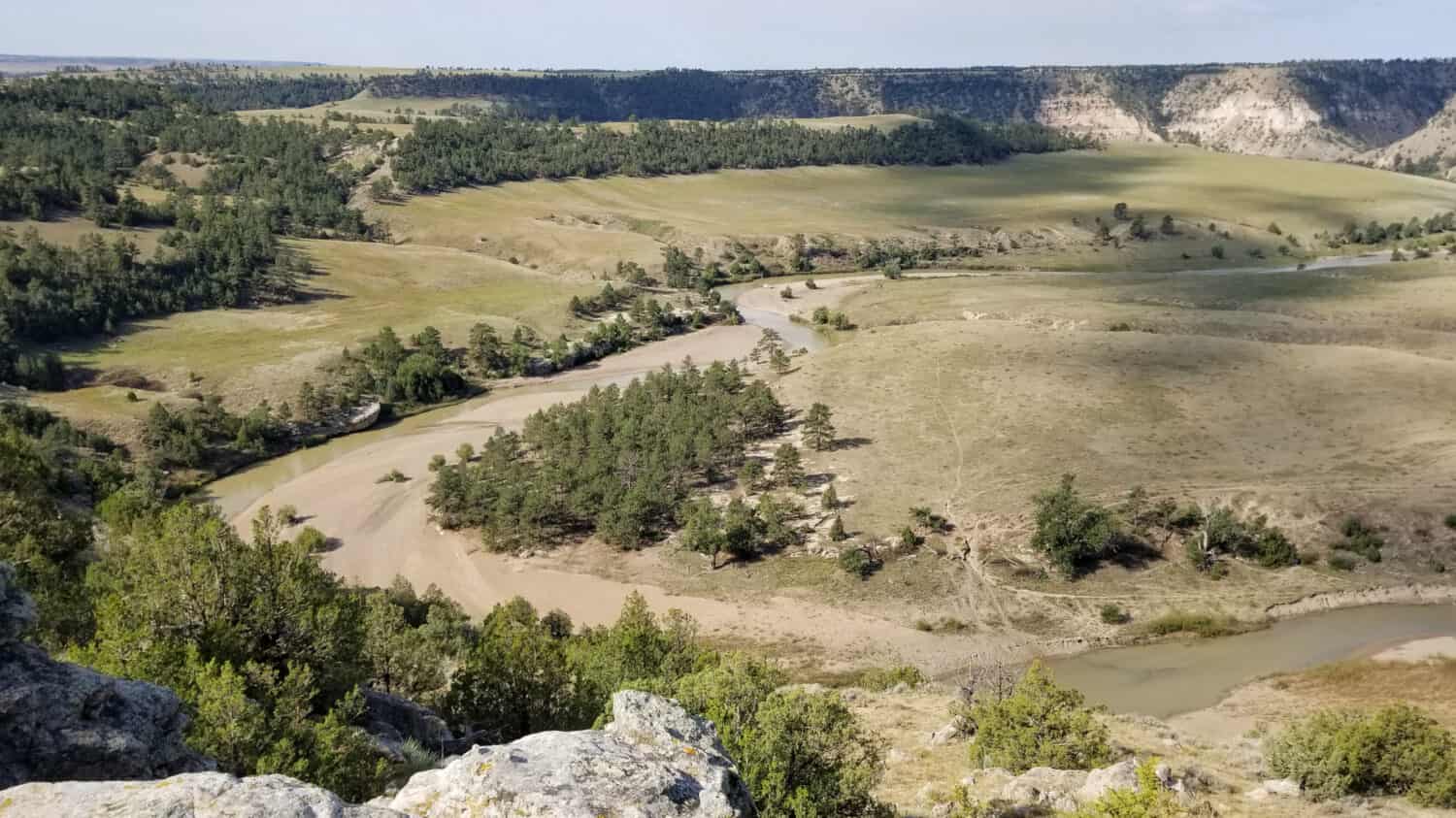
The Black Hills are considered sacred land.
©Trina Barnes/Shutterstock.com
South Dakota is home to the Cheyenne River Reservation, which spans 4,267 square miles. Over 12,000 people live on the land. The reservation boasts a stunning array of prairies, rolling hills, and rivers. These areas create an ideal habitat for wildlife. Bison (Bison bison), coyote (Canis latrans), mule deer (Odocoileus hemionus), and elk (Cervus canadensis) are among the wildlife species living in the region.
Cheyenne River Sioux lives on the Cheyenne River Reservation. They have deep historical ties to the Great Plains and the Missouri River. The reservation got established after two treaties (1851 and 1868) and the Sioux Act of 1889.
5. Standing Rock Reservation

Standing Rock boasts stunning views of the plains and the Missouri River.
©Joseph Sohm/Shutterstock.com
Situated in North Dakota and South Dakota, the Standing Rock Reservation covers approximately 3,625 square miles. It is home to around 8,600 residents. The reservation sits along the Missouri River, making it the perfect place to spot wildlife like bison (Bison bison), elk (Cervus canadensis), deer (Odocoileus spp.), coyotes (Canis latrans), and a variety of bird species.
The Lakota Sioux and Dakota Sioux tribes share the Standing Rock Reservation. The reservation started in 1878 after getting established at Fort Yates. It gained international attention recently due to protests against the Dakota Access Pipeline.
6. Wind River Reservation
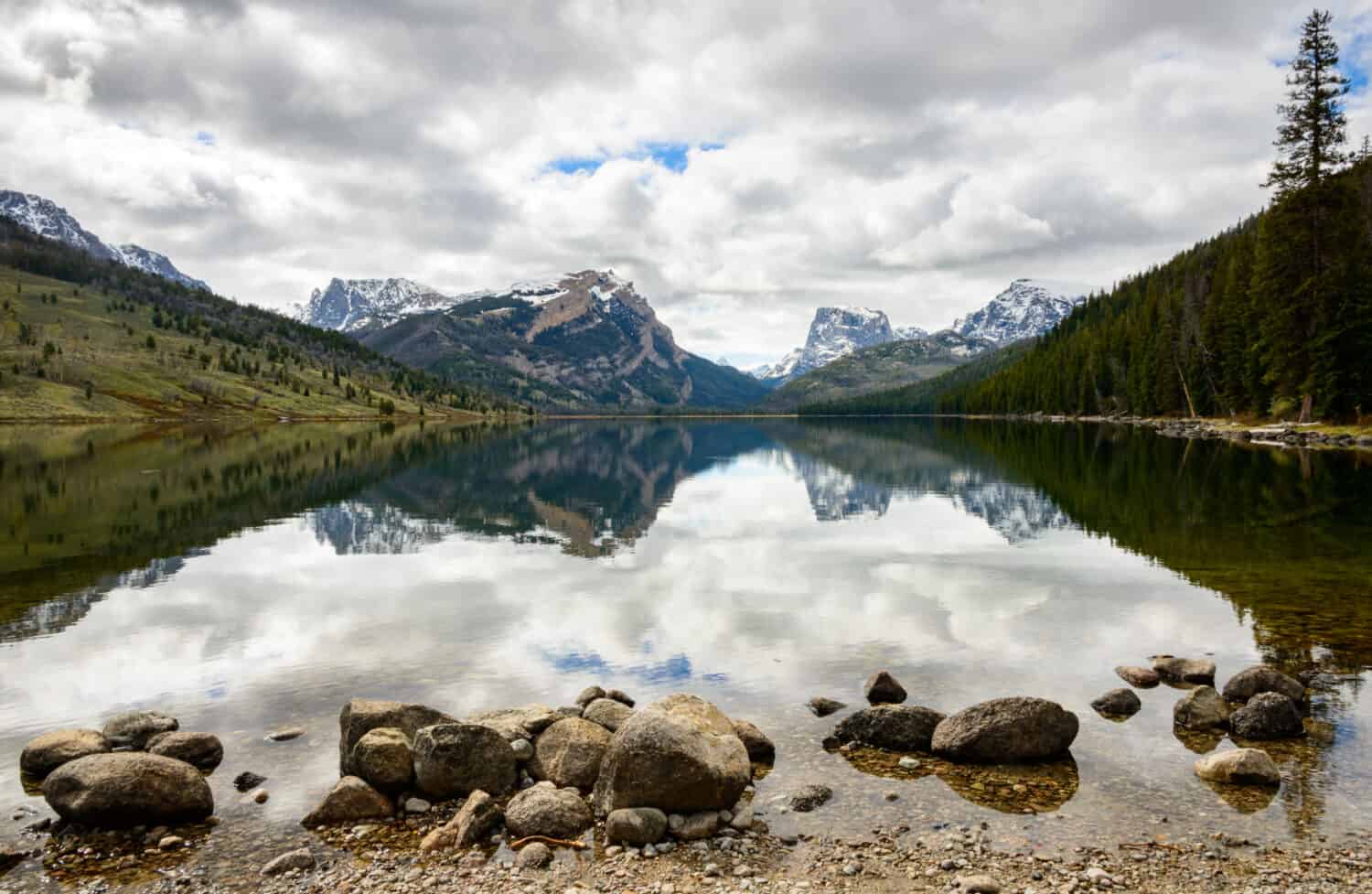
Wind River Reservation is in the Wind River range.
©Zack Frank/Shutterstock.com
Up in Wyoming, the Wind River Reservation covers roughly 3,532 square. More than 12,000 people are living on its land. The reservation is nestled within the gorgeous Wind River Mountain Range. It has the ideal mix of mountainous and prairie landscapes for a diverse mix of wildlife. If you visit the area, you may see bison (Bison bison), elk (Cervus canadensis), mule deer (Odocoileus hemionus), golden eagles (Aquila chrysaetos), or pronghorn antelope (Antilocapra americana).
The Eastern Shoshone and Northern Arapaho tribes share the Wind River Reservation. Its history is long and a little windy. But the primary dates that established the current reservation are 1868 and 1878. In the former, the Treaty of Fort Bridger gave the area to the Eastern Shoshone. Then in 1878, the Northern Arapaho joined them on the reservation.
7. Pine Ridge Reservation

Sweeping and jaw-dropping vistas are part of Pine Ridge.
©Virrage Images/Shutterstock.com
This South Dakota reservation covers approximately 3,469 square miles and is home to over 18,000 residents. Pine Ridge Reservation sits amidst rolling plains and grasslands. Many wildlife species thrive in the area, including elk (Cervus canadensis), river otters (Lontra canadensis), black-footed ferrets (Mustela nigripes), and mule deer (Odocoileus hemionus).
The Pine Ridge Reservation is home to the Oglala Lakota Sioux. It was established in 1889.
8. Fort Peck Indian Reservation

The Fort Peck Indian Reservation lies on the far bank of the Missouri River in Montana.
The Fort Peck Indian Reservation Consists of 3,200 square miles of land in Montana. 926,000 acres are owned by Indians, divided into 378,000 acres being tribally owned and 548,000 acres being allotted Indian lands to individuals. It’s home to two different American Indian nations–Sioux and Assiniboine. Of the 10,000 members enrolled in the tribe, an estimated 6,000 members live on or around the reservation. Its location is the northeast corner of the state of Montana, on the northern side of the Missouri River.
The Fort Peck Indian Reservation was originally established in 1871.
9. San Carlos Apache Reservation

San Carlos Apache Indian Reservation features prominent and towering cliffs.
©LouLouPhotos/Shutterstock.com
One of the smaller reservations in Arizona is the San Carols Apache Reservation. It covers about 2,866 square miles and is home to around 15,000 residents. Its mountains, forests, and canyons provide a suitable environment for many wildlife species. Black bears (Ursus americanus), mountain lions (Puma concolor), mule deer (Odocoileus hemionus), and a variety of bird species live in the area.
The San Carlos Apache Reservation is home to the San Carlos Apache Tribe. It started after an executive order in 1871.
10. Fort Apache Reservation
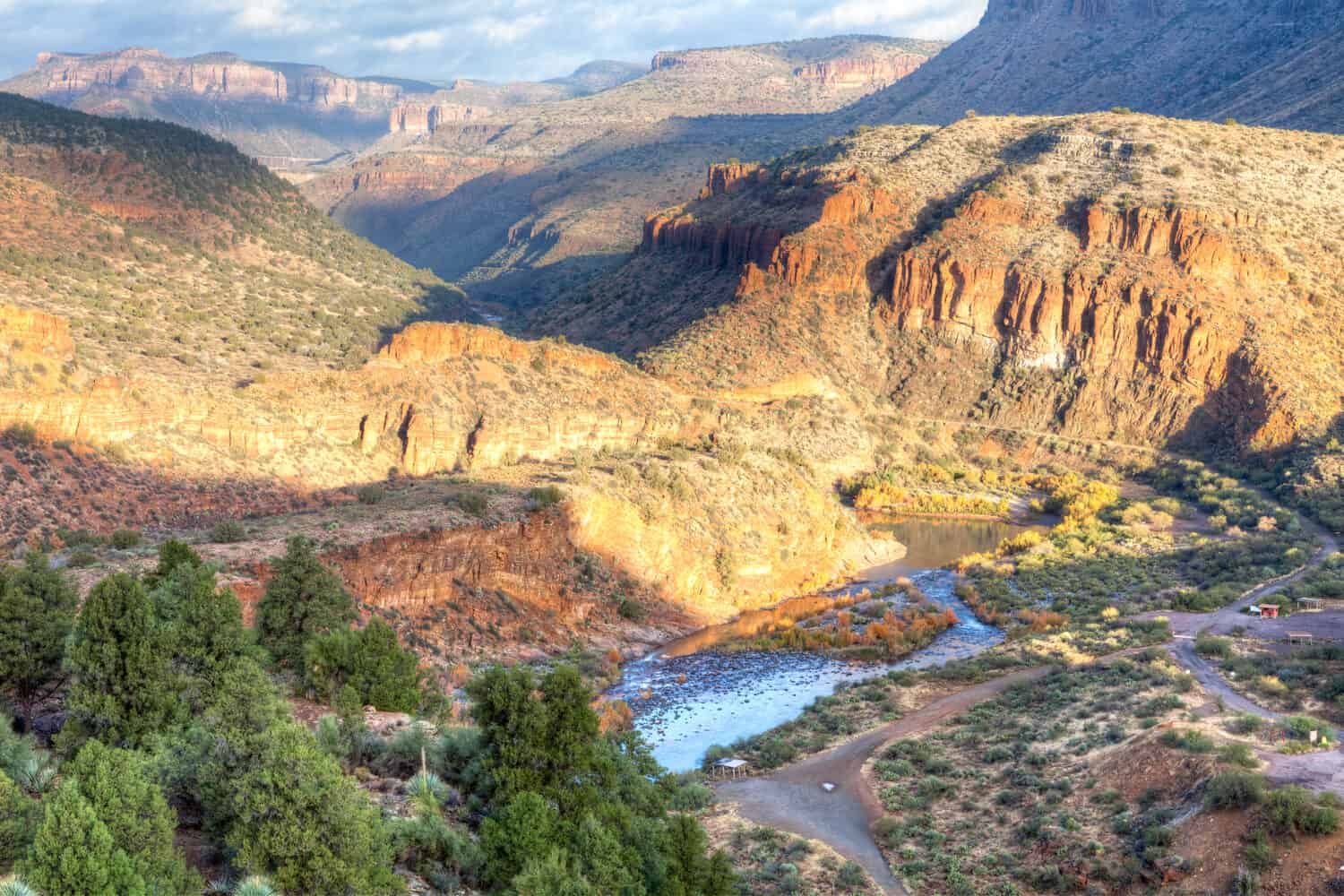
Stunning views await in Fort Apache Indian Reservation…like these of Salt River Canyon.
©LHBLLC/Shutterstock.com
The Fort Apache Reservation covers approximately 2,627 square miles in Arizona. Roughly 12,000 residents live on the land. It is nestled in the gorgeous White Mountains and includes forests, rivers, and canyons. The area supports an array of wildlife, including bald eagle (Haliaeetus leucocephalus), Mexican spotted owl (Strix occidentalis lucida), Mexican wolf (Canis lupus baileyi), and various bird species.
The Fort Apache Reservation is home to the White Mountain Apache Tribe. Apache people lived on the land in this region for centuries. Historically, the Apache fiercely defended their lands against external forces. Their reservation got established in 1891 and originally included the San Carlos reservation. The two separated in 1897 after Congress intervened.
11. Flathead Reservation

Plenty of wide-open land for animals to roam around on the Flathead Indian Reservation.
©Florence-Joseph McGinn/Shutterstock.com
This expansive reservation covers 2,050 square miles in Montana. There are approximately 5,000 residents living on Flathead Reservation. Most of Flathead Lake and some of the Mission Mountain range sit within tribal land. The stunning scenery is also home to many impressive animals, including moose (Alces alces), bighorn sheep (Ovis canadensis), grizzly bear (Ursus arctos horribilis), and elk (Cervus canadensis).
The Flathead Reservation is where three different tribes live. The Bitterroot Salish, Kootenai, and upper Pend d’Oreille all call the region home. It got established after the signing of the Hellgate Treaty in 1855.
12. Gila River Reservation
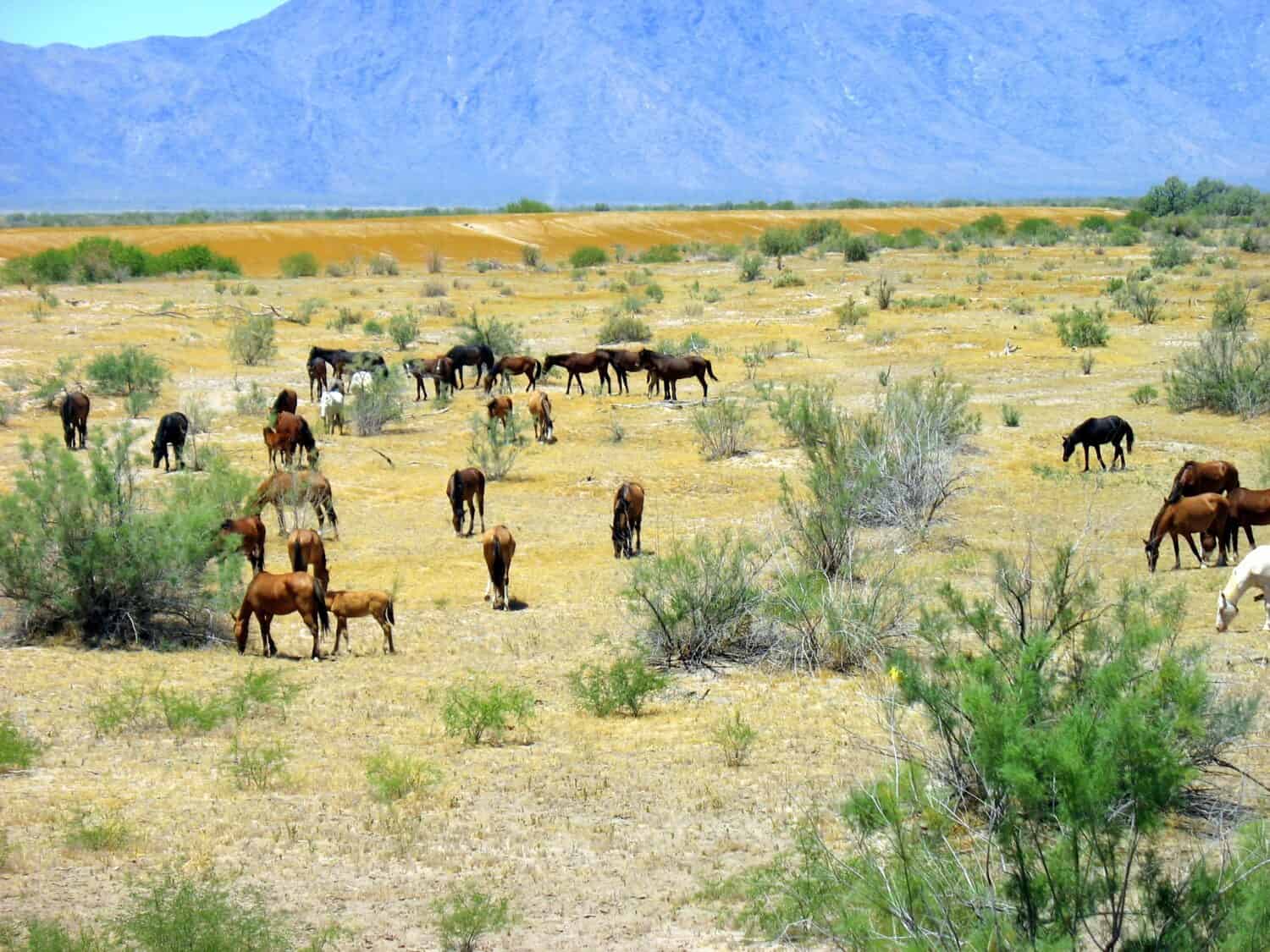
Wild horses roam throughout the Gila River Reservation.
©Around the World Photos/Shutterstock.com
This Arizona reservation covers about 583 square miles in Arizona. Over 11,000 people live on the Gila River Reservation. The landscape is mostly desert and riparian areas and supports a variety of wildlife. Some species that call the region home include the desert tortoise (Gopherus agassizii), Gila monster (Heloderma suspectum), coyotes (Canis latrans), and a range of bird species.
The Gila River Reservation is home to the Akimel O’odham (Pima) and the Pee-Posh (Maricopa) tribes. The tribes have a long-standing history in the region, with their ancestors working on the fertile lands along the Gila River for generations, and it became their official reservation in 1859.
Summary of the 11 Largest Native American Reservations
| Rank | Reservation | Tribes | Location | Size |
|---|---|---|---|---|
| 1 | Navjao Nation | Navajo Nation (Diné) | Arizona, New Mexico, Utah | 27,000 sq miles |
| 2 | Uintah and Ouray | Ute | Utah | 6.769 sq miles |
| 3 | Tohono O’odham | Tohono O’odham Nation | Arizona | 4,460 sq miles |
| 4 | Cheyenne River | Cheyenne River Sioux | South Dakota | 4,267 sq miles |
| 5 | Standing Rock | Lakota Sioux and Dakota Sioux | North and South Dakota | 3,625 sq miles |
| 6 | Wind River | Eastern Shoshone and Northern Arapaho | Wyoming | 3,532 sq miles |
| 7 | Pine Ridge | Oglala Lakota Sioux | South Dakota | 3,469 sq miles |
| 8 | Fort Peck | Assiniboine and Sioux | Montana | 3,200 sq miles |
| 9 | San Carlos Apache | San Carlos Apache | Arizona | 2,866 sq miles |
| 10 | Fort Apache | White Mountain Apache | Arizona | 2,627 sq miles |
| 11 | Flathead | Bitterroot Salish, Kootenai, and upper Pend d’Oreille | Montana | 2,050 sq miles |
| 12 | Gila River | Akimel O’odham (Pima) and Pee-Posh (Maricopa) | Arizona | 583 sq miles |
Thank you for reading! Have some feedback for us? Contact the AZ Animals editorial team.

